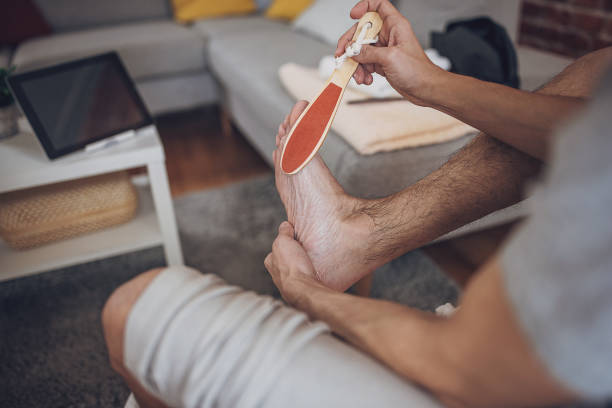The Centers for Advanced Orthopaedics is redefining the way musculoskeletal care is delivered across the region with locations throughout Maryland, DC, Virginia and Pennsylvania.
Top Mistakes People Make When Treating Foot Pain at Home

Foot pain can disrupt daily life, making every step uncomfortable. When discomfort strikes, it is natural to want to manage it at home. However, treating foot care pain without proper guidance can sometimes lead to unintended consequences.
Here, we share the most common mistakes people make when trying to treat foot pain at home and how to avoid them.
Ignoring Persistent or Severe Pain
Many people hope foot pain will simply go away on its own. While minor soreness often improves with rest, persistent or worsening pain could signal a more serious issue such as a fracture, tendon injury, or arthritis. Ignoring these symptoms delays treatment and can make recovery more difficult.
What to do: If your foot pain lasts more than a few days, worsens with activity, or limits your mobility, it is time to consult a specialist.
Self-Diagnosing Without Professional Evaluation
The causes of foot pain are numerous, from sprains to fractures to nerve issues and infections. Without proper evaluation, it is easy to mistake one condition for another and apply the wrong treatment.
What to do: Seek a professional diagnosis to ensure you get the right treatment plan tailored to your specific condition.
Using Improper Footwear or Ignoring Shoe Fit
Wearing shoes that do not fit well or lack proper support can exacerbate foot pain and delay healing. Many people underestimate how important footwear is to foot health, especially when recovering from injury or managing chronic conditions.
What to do: Choose shoes that fit well, offer good arch support, and are appropriate for your activity.
Over-Reliance on Over-the-Counter Pain Relievers
While non-prescription pain medications can provide temporary relief, relying on them alone without addressing the underlying cause can mask symptoms and potentially worsen the problem.
What to do: Use pain relievers as directed, but also focus on proper diagnosis, rest, and other treatments.
Skipping Rest or Ignoring Activity Modifications
Continuing to put weight or stress on an injured foot without proper rest can delay healing or cause further injury. Some injuries, including stress fractures or severe sprains, require time off and sometimes immobilization.
What to do: Follow your provider’s specific recommendations for rest and activity modification. Assistive devices such as crutches or a walking boot may be needed to fully protect the foot while it heals.
Neglecting Follow-Up Care and Rehabilitation
Foot injuries and chronic conditions often require ongoing care, which may include physical therapy and rehabilitation exercises. Skipping this step can limit recovery and increase the risk of future issues.
What to do: Adhering to a complete care plan helps restore strength, flexibility, and function over time.
Taking the right steps early on, exemplified by resting, wearing proper footwear, and following professional guidance, can make a significant difference in recovery and long-term foot health. If you are dealing with ongoing foot pain, Schedule Now with one of our specialists for an accurate diagnosis and personalized treatment plan.